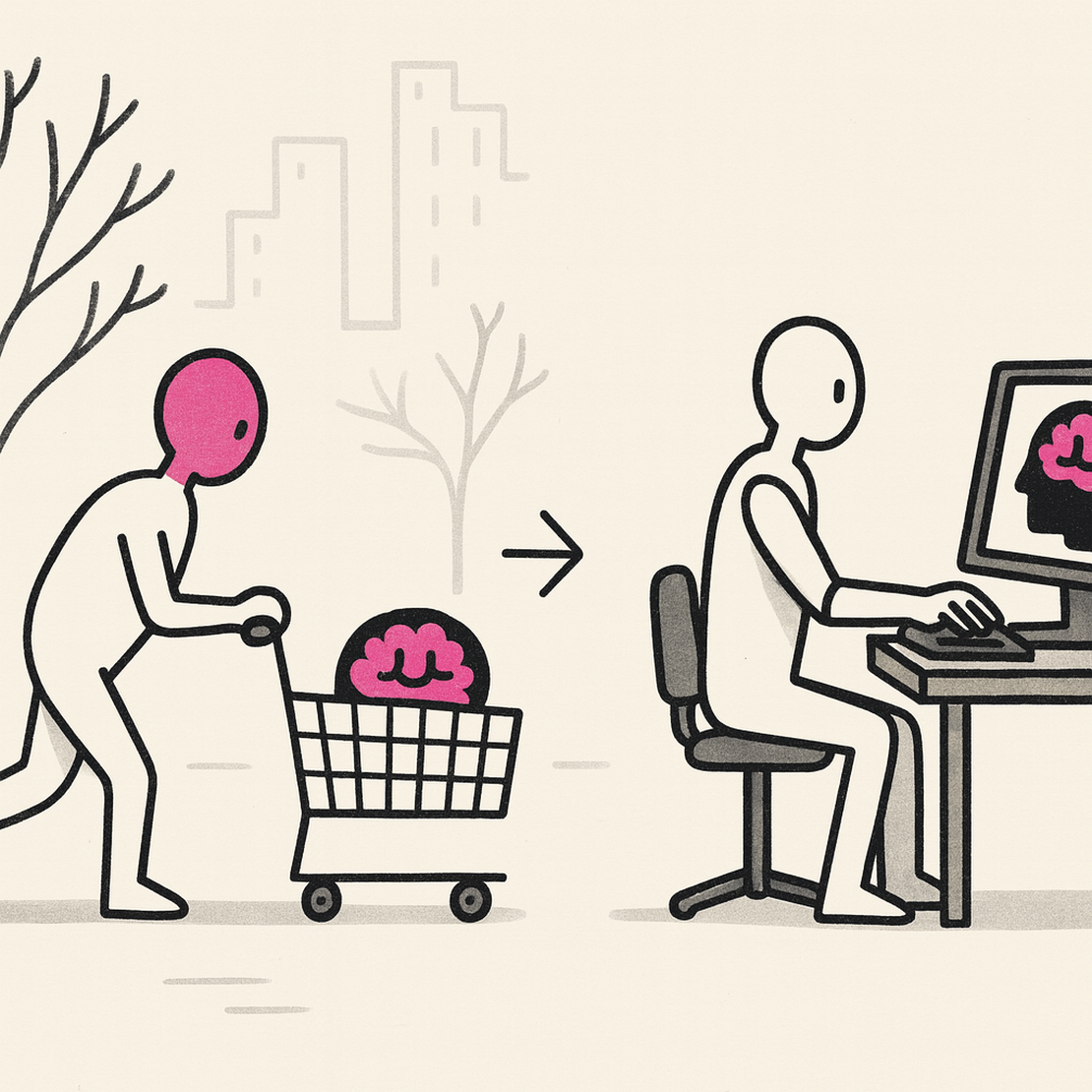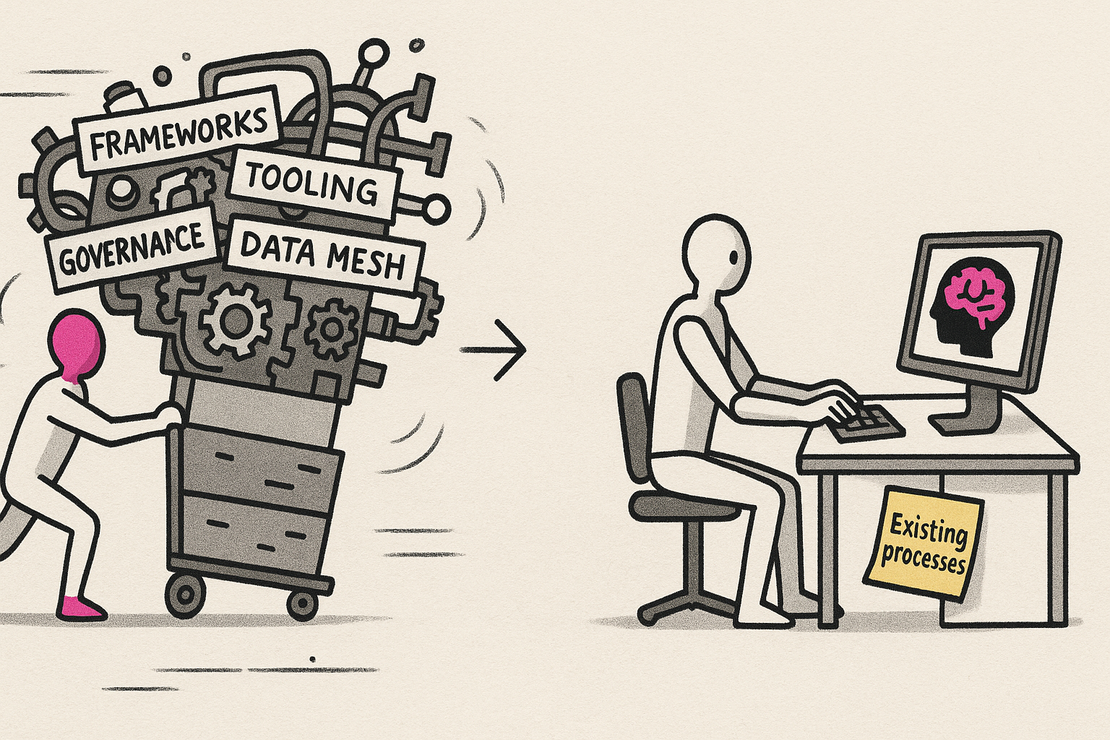AI Will Become Normalized at Work because it Becomes Normalized Outside of Work
I have written the same thing so many times over the past 18 months you would think that my generative abilities are skipping on the same track like a record player in the 1970s hung up on a scratch—“you can buy me flowers, skrrrt flowers, skrrrt flowers, skrrrt flowers.” :
Yes, in fact many people do prefer synthetic over organic-authentic
Nobody wants AI to read them a story is an adorable quip that smells like equal parts journalistic snobbery, bitterness, fear and sentimentalism.
See, the thing is: soon, you simply won’t know if AI is reading the story, or wrote the story, or is the story. Discerning “authentic media” from “synthetic media” will be a fool’s errand…like it was 20 years ago when the game was “film photo” or “digital photo.” Today, no one really cares, and by no one, I only mean 99.999% of the population who does not own an original Ansel Adams photo.
And here I go about to repeat myself again…many of the humans alive today, living in areas saturated by multi-media, have been raised on synthetic diets of both the chemical variety and the cognitive variety: aka artificial flavors and CGI. “Is it real?” is not really a game anymore.
Today, Timbaland announced that his studio will be manufacturing artists using AI. I do not believe he will fail. Producers have been manufacturing talent for decades: Boy Bands, K-pop—manufactured in state-of-the-art factories using math and science, fronted by warm bodies. Timbaland is right…and he has the tools to do it. He may not convert the majority of music listeners alive at the moment, who still feel nostalgic about human creators or who cry when they see Taylor Swift at a restaurant eating a salad… It’s the children of our children who won’t care if the “face of the music” is human.
The Gorillaz dipped their cartoon toes in these waters a decade ago. TikTok is quickly becoming saturated with high-ish quality AI video…and believe me when I tell you…brain-rot swipers watching 5-second clips of artists are beginning to care less and less what the difference is between a “real” thing and an “AI” thing.
What matters is the dopamine hit. And what matters about someone being read a story is the effect of the reading: sleep for a child, relaxing for an adult…the means of delivery is second-order consideration only. Imagining a world dominated, or at least saturated with, AI-produced synthetic things is not a “dystopian horror story”—it’s actually our reality and it’s happening right now.
“Everything, everywhere, all at once” is becoming a generative output of a prompt, and stomping your foot, clenching your little fists and shouting “I won’t stand for it” is sort of cute, like someone else’s child having a tantrum, but your little shouts are lost in the din of the maelstrom called AI.
And please—let’s not forget Milli Vanilli: puppets fronting someone else’s voice! That scandal was just the opening act. They lip-synced atop someone else’s actual talent, and we pitched a fit because we felt deceived. Yet everyone from Madonna to Beyoncé lip-syncs bits of a tour routine when the choreography goes nuclear.
So why not have a warm body lip-sync to AI talent? If a pumped-up hologram or a humanoid robot can’t yet nail every dance move, you shove an attractive human in front—Milli Vanilli 2.0—and call it a day. As long as the production is slick, we’ll cheer for the illusion. The question “Is this human?” will be as irrelevant as “Is this film or digital?” because, like the children of our children, we’ll be wired to chase the hit, not the hand that delivered it.
What is important is that we see the groundswell of AI-dominated cultural influences for what it is: the tide is coming in, you may object, but the tide will simply wash over you unless you react. You have a choice: put some slack in your bowline so your boat does not get swamped by the rise, or remain tethered to the refusal to accept the AI tide…and drown.
In this matter, you do have a choice, but it is not “choose AI” or “not choose AI.” The choice is different: it is actually “help architect, shape and influence AI,” or “become a supplicant end-user of AI,” or “ignorantly unaware consumer of AI”…ok fine, if we “choose” the third option it’s not really a choice because you are not aware of the choices…but we all got that, right?
The reason I am going on and on about the cultural tsunami called “AI” is that it first washes over common man doing common things until it is completely normalized and no longer noteworthy: aka Phase 1 Normalizing…and we’re in it now.
Phase 1 Normalizing:
AI washes over everyday life—dominating social media feeds, curating playlists, auto-tagging our vacation photos. Nobody throws a parade; it just sneaks in.
Phase 2 Normalizing:
Decision-makers, businessmen/women, regulators, and policymakers are up to their eyeballs in an AI-saturated world outside of work. They begin to leave the office window open, letting the cool AI breeze infiltrate their paperwork until the line between work culture and personal culture is so blurred it vanishes. And I’m sorry, not sorry, but if you don’t already see this happening in the workplace, you either work with your hands or you’re losing your job to AI.
Phase 3 Normalizing:
No one will notice—like realizing your lawn needs to be mowed and wondering “when did that grow?” Phase 3 is not insidious; it’s no more so than seasons changing and knowing that today you can wear shorts—you don’t overanalyze it, you simply wear shorts. So, think about it like this: AI is like shorts for summer…and summer is now permanent
1 https://www.theguardian.com/technology/2025/jun/03/creatives-academics-rejecting-ai-at-home-work 2 https://www.billboard.com/pro/timbaland-launches-ai-entertainment-company/


